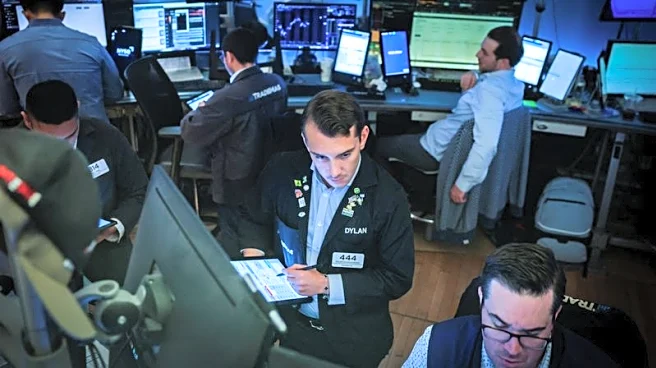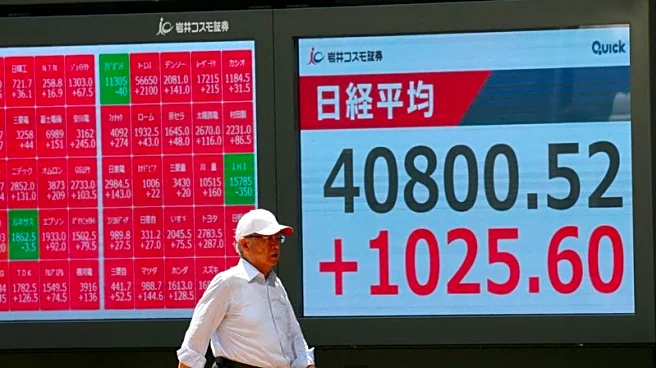What's Happening?
Japanese investors are increasingly shifting their investment strategies due to rising domestic interest rates and a weak yen. Historically, these investors have sought yields abroad, but recent trends indicate a recalibration towards domestic assets. This shift is characterized by a significant increase in capital outflows, with Japanese investors selling foreign stocks for the third consecutive month in July 2025, withdrawing ¥536.4 billion ($3.64 billion) from foreign equities. The focus has shifted from equities to bonds, with ¥3.63 trillion funneled into foreign bonds in July, reflecting risk aversion amid global uncertainties. Meanwhile, foreign investors are injecting record inflows into Japanese equities and bonds, with April 2025 seeing a record ¥8.21 trillion ($56.6 billion) inflow, the largest since 1996. This influx is driven by institutional investors such as pension funds and asset managers, reflecting growing confidence in Japan's reflationary momentum.
Why It's Important?
The shift in Japanese investment strategies has significant implications for global markets and Japan's economic trajectory. As Japanese investors recalibrate their strategies, foreign investors are stepping in, reshaping market dynamics. This interplay supports Japan's economic stability and positions it as a key player in global reflation trends. The surge in foreign capital into Japanese assets, particularly equities, highlights a growing confidence in Japan's economic prospects. This shift also reflects broader geopolitical and economic factors, including U.S.-Japan trade tensions under President Trump, which have influenced capital flows. The structural changes in Japanese investor behavior, driven by demographic pressures and corporate governance reforms, are likely to have long-term impacts on global investment patterns.
What's Next?
The ongoing shift in Japanese investment strategies is expected to continue influencing global market dynamics. As foreign investors increasingly focus on Japanese assets, particularly high-quality, globally integrated firms, the Japanese market may experience further growth. Additionally, corporate governance reforms and share buybacks are likely to continue underpinning this rally. However, domestic investors remain cautious, with Japanese retail investors withdrawing $23 billion in 2025, highlighting a disconnect between domestic and international sentiment. The interplay of Japanese outflows and foreign inflows is creating a new equilibrium in Japan's reflation narrative, with potential challenges related to currency risks and geopolitical uncertainties.
Beyond the Headlines
The broader implications of this shift in Japanese investment strategies include Japan's role as a global FDI hub. The country's FDI inflows in 2024 reached $21.4 billion, with the U.S. as the largest source. Policies to attract FDI, including lowering ownership thresholds in sensitive sectors, aim to double inward investment to ¥100 trillion by 2030. This aligns with Japan's broader strategy to stabilize supply chains amid U.S.-China trade tensions and geopolitical uncertainties. However, challenges persist, with foreign direct investment flows remaining volatile and U.S.-Japan trade relations posing potential risks.












